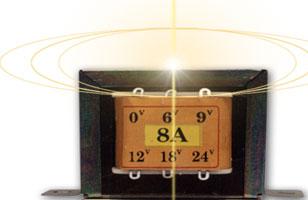Operation and Design of Multilevel Inverters
Tên tài liệu: Vận hành và thiết kế bộ biến tần đa cấp.
The concept of utilizing multiple small voltage levels to perform power conversion was patented by an MIT researcher over twenty years ago [1,2]. Advantages of this multilevel approach include good power quality, good electromagnetic compatibility (EMC), low switching losses, and high voltage capability. The main disadvantages of this technique are that a larger number of switching semiconductors are required for lower-voltage systems and the small voltage steps must be supplied on the dc side either by a capacitor bank or isolated voltage sources. The first topology introduced was the series H-bridge design [1]. This was followed by the diodeclamped [2-4] converter which utilized a bank of series capacitors. A later invention [5] detailed the flying capacitor design in which the capacitors were floating rather than series-connected. Another multilevel design involves parallel connection of inverter phases through inter-phase reactors [6]. In this design, the semiconductors block the entire dc voltage, but share the load current. Several combinational
designs have also emerged [7] some involving cascading the fundamental topologies [8-12]. These designs can create higher power quality for a given number of semiconductor devices than the fundamental topologies alone due to a multiplying effect of the number of levels
Thanh lý máy hiện sóng số 100 MHz, 2CH, 1 GSa/s: Xem ở đây!



 Tính toán quấn máy biến áp 1 pha tần số 50Hz
Tính toán quấn máy biến áp 1 pha tần số 50Hz  Cấu tạo, nguyên tắc hoạt động của Transitor
Cấu tạo, nguyên tắc hoạt động của Transitor  Nguyên lý và sử dụng nguồn xung hay bộ biến đổi nguồn DC-DC
Nguyên lý và sử dụng nguồn xung hay bộ biến đổi nguồn DC-DC  Làm LED trái tim với 8501
Làm LED trái tim với 8501  Ký hiệu, Hình dạng, kiểm tra, Xác định chân Transitor
Ký hiệu, Hình dạng, kiểm tra, Xác định chân Transitor 

